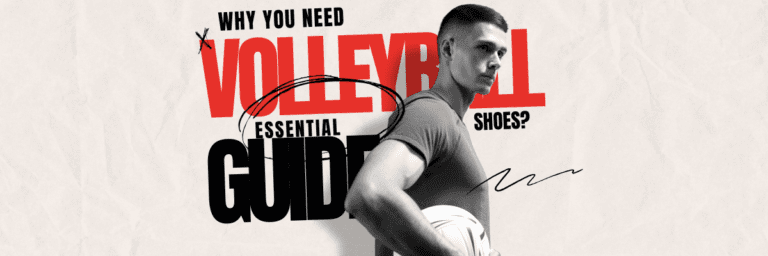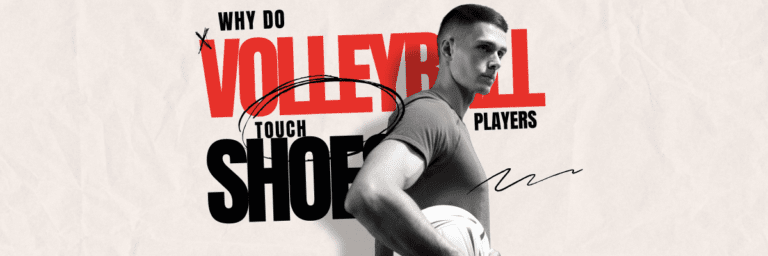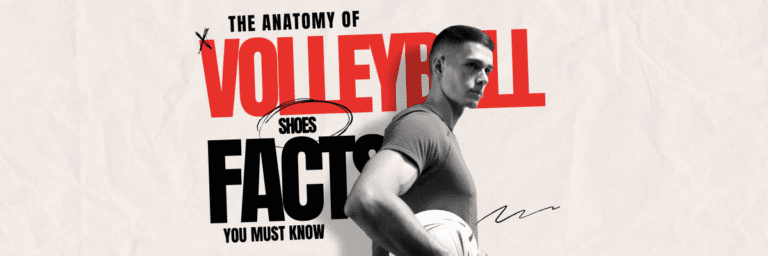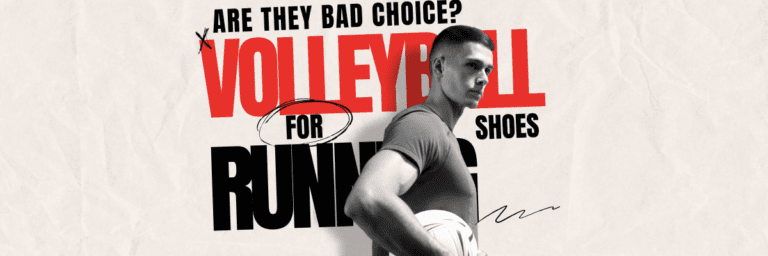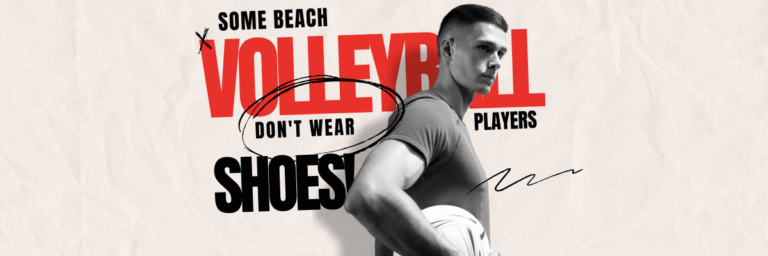Volleyball Positions: An In-Depth Guide
Introduction
Have you ever wondered what makes volleyball so thrilling? It’s not just the high jumps or the powerful spikes; it’s the intricate ballet of positions played out on the court. This dance of strategy began over a century ago.
Brief history of volleyball and the evolution of player positions
Volleyball, originally known as “Mintonette,” was invented in 1895 by William G. Morgan. It started as a blend of basketball, baseball, tennis, and handball, and has since evolved into the dynamic sport we know today. A key part of this evolution has been the development of specialised player positions.

Overview of the importance of understanding different positions in volleyball
Understanding these positions in volleyball is crucial, not just for players, but for anyone who wants to appreciate the game fully. Each position is like a unique piece in a puzzle; only when they come together correctly does the picture become clear. From the nimble libero to the strategic setter, every role is essential.
Knowing these positions can change how you play, watch, and enjoy volleyball. It’s about understanding the roles, the movements, and the tactics that make every match an exciting story of teamwork and skill.

Understanding the Basics of Volleyball Positions
Volleyball is a game where each player’s role is vital to the team’s success. Let’s break down the six fundamental positions in volleyball, each with its unique responsibilities and skill sets.
Setter: The Team’s Strategist
The setter is like the quarterback in football, the brain of the team’s offence. They have the crucial role of setting the ball for attackers, making quick decisions that can turn the tide of the game. A good setter must have sharp strategic thinking, excellent ball-handling skills, and the ability to anticipate the movements of both teammates and opponents.
Outside Hitter: The Versatile Frontline Attacker
Also known as the Left Side Hitter, the outside hitter is usually the primary attack option for the team. They need to be versatile, capable of hitting from the front and back rows, and also skilled in blocking and defence. This position requires not just power but agility and precision.
Middle Blocker: The Defensive Anchor
Positioned at the center of the net, the Middle Blocker is crucial for defence, specialising in blocking the opponent’s attacks. They also play a key role in quick offensive plays, often catching the opponent off guard. Agility, timing, and a strong sense of the game are key traits of a successful middle blocker.
Opposite Hitter: The All-Rounder
Situated on the right side of the court, the Opposite Hitter is a critical player for both offence and defence. This position demands a player who can hit and block effectively, often stepping up as a secondary setter or a key player in serve-receive formations.
Libero: The Defensive Specialist
The libero is a back-row defensive specialist. They are the backbone of the team’s defence, with exceptional skills in digging and passing. The libero must have quick reflexes, great ball control, and the ability to read the game effectively. They are not allowed to serve, spike, or rotate into the front row.
Defensive Specialist: The Flex Player
Similar to the libero but with the ability to serve and more flexibility in rotation, the Defensive Specialist is key in strengthening the team’s defence and serve-receive formations. They must be adaptable, quick, and skilled in various aspects of back-row play.
Detailed Breakdown of Each Position
Setter
Role and Responsibilities
The setter is the orchestrator of the team’s offence, responsible for setting the ball with precision to attackers. They make split-second decisions, determining the best play based on the team’s position and the opponent’s setup.
Skills Required
A great setter needs excellent hand-eye coordination, agility, and spatial awareness. They must be able to deliver consistent sets under pressure and have a deep understanding of volleyball strategy.
Famous Setters in Volleyball History
Volleyball has seen many talented setters, like Karch Kiraly and Misty May-Treanor, who have left a lasting impact on the game with their exceptional setting skills and strategic play.
Outside Hitter
Role and Responsibilities
The Outside Hitter, positioned on the front left side, is often the team’s primary attacker. They are responsible for a variety of shots, from powerful spikes to strategic plays, and are also crucial in blocking and defence.
Skills Required
This position demands power, agility, and precision. An outside hitter must excel in jumping, hitting, and blocking, along with having strong defensive skills.
Notable Outside Hitters
Players like Giba and Logan Tom have set high standards as outside hitters with their remarkable ability to deliver powerful attacks and their overall versatility on the court.
Middle Blocker
Role and Responsibilities
The Middle Blocker is the team’s defensive core, specialising in blocking opponent spikes. They also contribute to quick attacks, making them a dual-threat.
Skills Required
Quick reflexes, strong jumping ability, and excellent timing are essential. Middle blockers must be able to read the game well and react swiftly to block attacks.
Key Middle Blockers to Know
Legends like Lang Ping and David Lee are renowned for their formidable presence at the net, showcasing exceptional blocking skills and agility.
Opposite Hitter
Role and Responsibilities
The Opposite Hitter, positioned on the right side, is a versatile player handling both offensive spikes and defensive blocks. They often serve as a backup setter and are key in balancing the team’s attack.
Skills Required
They need to have a powerful arm for hitting, solid blocking skills, and the versatility to adapt to different plays. Good ball control and strategic understanding are also vital.
Influential Opposite Hitters
Players such as Sergey Tetyukhin and Sheilla Castro are known for their impressive skills as opposite hitters, contributing significantly to their teams’ successes.
Libero
Role and Responsibilities
The libero specialises in defensive skills, particularly digging and passing. They cover a large area of the backcourt and are crucial in maintaining the team’s defensive stability.
Skills Required
Liberos must have exceptional reflexes, agility, and ball control. They need to read the opponent’s attack accurately and execute quick, precise movements.
Prominent Liberos in the Sport
Players like Sergio Dutra Santos (Serginho) and Fabiana de Oliveira (Fabi) have redefined the libero position with their outstanding defensive skills and game intelligence.
Defensive Specialist
Role and Responsibilities
A Defensive Specialist is a versatile back-row player, often substituted for their serving and defensive skills. They play a similar role to the libero but with added responsibilities.
Skills Required
They need to be quick, agile, and adept at serve-receive and defence. Good ball-handling skills and the ability to serve effectively are also important.
Recognized Defensive Specialists
Players such as Camila Brait and Nicole Davis have made names for themselves as defensive specialists, contributing significantly to their teams’ defensive strength.

Court Zones and Positioning
Volleyball is a game of precision and strategy, not just in how the ball is hit, but also in how players position themselves on the court. Understanding the court layout, the positioning of each role, and the importance of rotation and alignment is crucial for any player or fan of the sport.
Understanding the Court Layout
A volleyball court is a rectangle divided into two equal halves by a net. The court is further segmented into front row and back row areas, each with specific zones (left, middle, and right). Knowing these zones is essential for understanding player positions and movements.
Positioning for Each Role in Different Formations
Each volleyball position has a specific area of the court where they are most effective:
- Setters usually position themselves in the right front or right back zone, ready to set up attacks.
- Outside Hitters are primarily found in the left front zone, ready for spikes and blocks.
- Middle Blockers anchor the middle front zone, specialising in blocking and quick attacks.
- Opposite Hitters cover the right front and back zones, balancing the attack on the opposite side of the outside hitters.
- Liberos and Defensive Specialists are dynamic, covering the back row zones, especially the left and middle back for defence and serve-receive.
Importance of Rotation and Alignment
Volleyball requires teams to rotate positions with each service gain, which means players must be adept at playing both front and back row roles. Proper rotation ensures that each player gets a turn in the front row (where attacking is more prevalent) and the back row (focused more on defence and serving). Alignment is also critical to avoid faults; players must maintain their rotational order relative to their teammates both before and after the serve.
Understanding these aspects of court zones and positioning not only enhances a player’s skill but also deepens a spectator’s appreciation of the strategic nuances of volleyball. It’s like a dance where each step and position is crucial to the overall performance of the team.
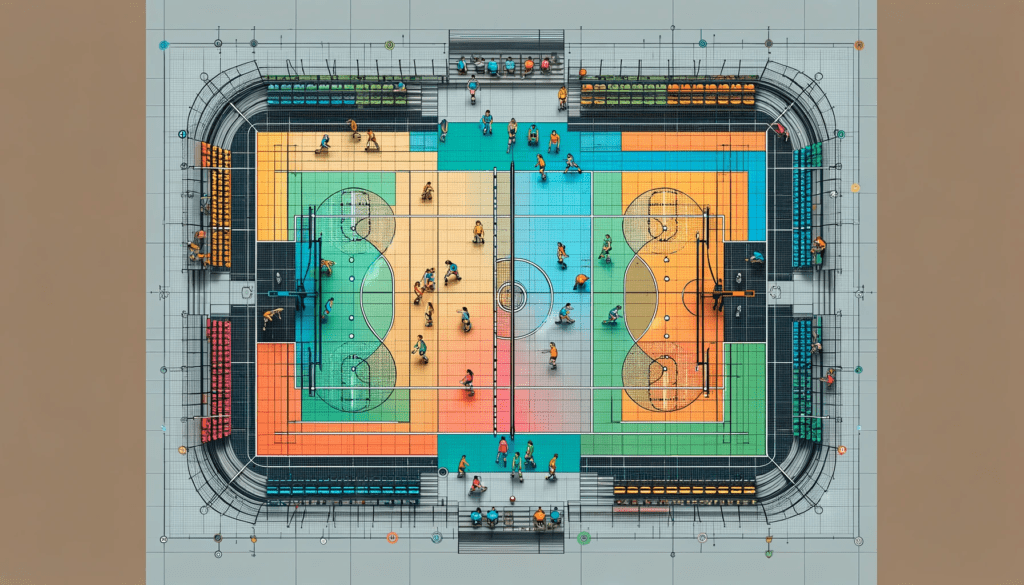
Tactical Formations and Strategies
Volleyball is as much about the brain as it is about brawn. The tactical formations a team employs can dramatically alter the course of a game. Understanding these formations and adapting strategies to the flow of the game is key to outsmarting the opposition.
Overview of Common Formations: 4-2, 6-2, and 5-1
4-2 Formation
In the 4-2 formation, there are four hitters and two setters. The setters are positioned in the front row when it’s their turn to serve. This setup allows for a steady offensive strategy but can limit back-row attacks.
6-2 Formation
The 6-2 formation offers a more dynamic approach, with six potential hitters and two setters. The setters operate from the back row, allowing for three front-row attackers at all times. This formation is great for teams with strong back-row hitters and versatile setters.
5-1 Formation
Perhaps the most demanding, the 5-1 formation utilises one setter and five hitters. The single setter orchestrates the offence, requiring them to be highly skilled and agile. This formation maximises front-row attacking options but places a lot of responsibility on the setter.
Strategic Considerations for Each Formation
Each formation brings its strengths and challenges:
- In a 4-2, the team must rely on the front-row setter for quick plays, making it somewhat predictable but stable.
- The 6-2 formation is versatile, allowing for continuous strong attacks from both front and back rows, but requires setters skilled in both setting and hitting.
- The 5-1 formation can be highly effective with a skilled setter, offering varied attacking options and a consistent setting style.
Adapting Tactics to the Flow of the Game
Adapting these formations to the game’s flow involves assessing the team’s strengths, the opponents’ weaknesses, and the match’s dynamics. For instance, a team might start with a 6-2 formation for a strong offence but switch to a 5-1 to stabilise their play if they’re leading. Tactical flexibility and the ability to quickly adjust to the opponents’ strategy are crucial in volleyball. It’s like a game of chess; each move is calculated, each formation a strategy to outmanoeuvre the opponent.
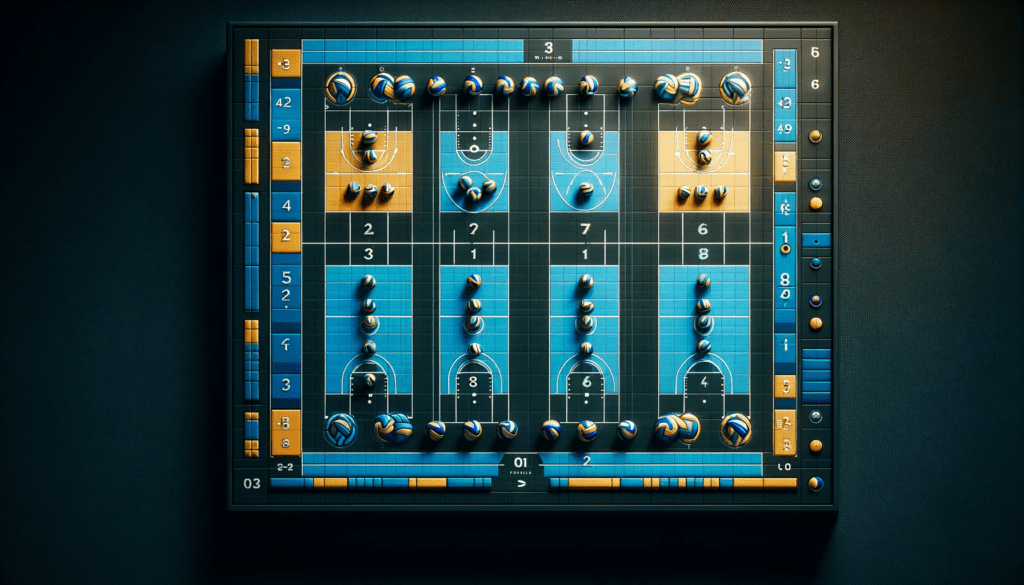
Training and Development for Each Position
To excel in volleyball, players must hone their skills specific to their positions. This involves targeted training drills, physical and mental conditioning, and practising teamwork and communication. Let’s explore how players can develop in each volleyball position.
Specific Training Drills and Exercises
For Setters
- Drills: Setters should practise a variety of setting techniques, including jump setting, back setting, and quick sets. Drills like ‘butterfly’ and ‘setting against the wall’ can improve precision and consistency.
- Exercises: Core strengthening exercises and agility drills are crucial for setters to enhance their movement and stability.
For Outside and Opposite Hitters
- Drills: Hitters should focus on spike approach techniques, including footwork and timing drills. They can practise hitting against a block and from different angles.
- Exercises: Plyometrics and strength training are essential to improve their explosive power and jumping ability.
For Middle Blockers
- Drills: Blocking drills focusing on footwork, timing, and hand positioning are critical. Reaction drills to improve quick movements and reading the setter are also beneficial.
- Exercises: Leg strength exercises and agility training help in quick movements and effective blocks.
For Liberos and Defensive Specialists
- Drills: Practising digging and passing from various angles and against different types of attacks is key. Reaction time and precision drills are also important.
- Exercises: Cardiovascular fitness, agility drills, and reaction time exercises are essential for these positions.
Physical and Mental Conditioning
- Physical Conditioning: All volleyball players should engage in regular strength, endurance, and flexibility training. Tailored workouts can help enhance the specific physical abilities required for their roles.
- Mental Conditioning: Mental toughness is crucial in volleyball. Practices like visualisation, stress management techniques, and cognitive exercises can help players maintain focus and handle pressure during games.
Teamwork and Communication Drills
- Team Drills: Drills that simulate game situations are great for developing teamwork. These include scrimmage games, rotational play practice, and coordinated defence drills.
- Communication Exercises: Effective communication is key in volleyball. Exercises that encourage verbal and non-verbal communication on court can significantly improve team coordination.
Training for volleyball is comprehensive, involving not just physical prowess but also mental sharpness, teamwork, and communication skills. Tailoring these aspects to each position’s demands ensures that every player can contribute to their fullest potential on the court.
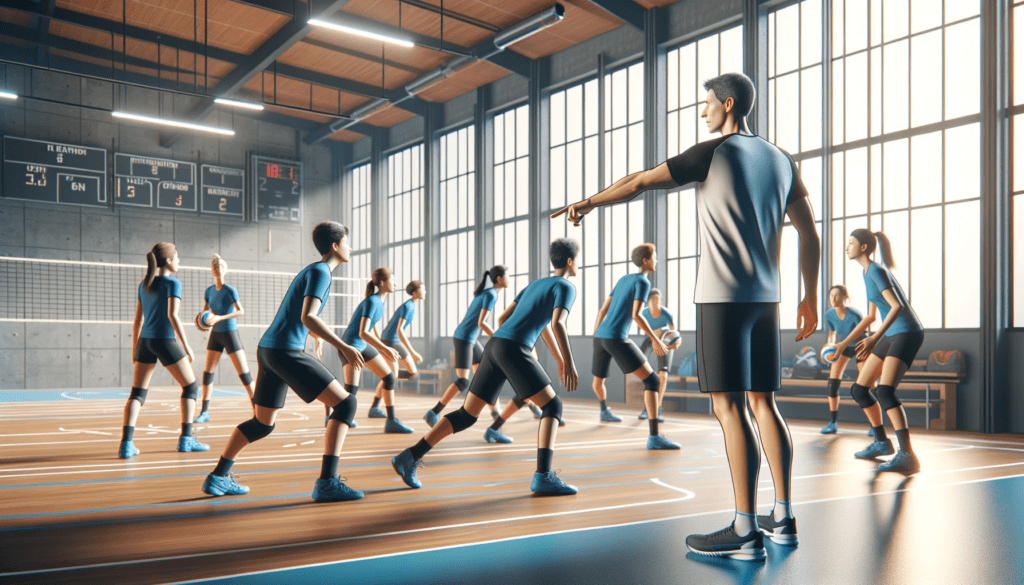
Rules and Regulations Specific to Positions
In volleyball, understanding the rules and regulations specific to each position is crucial for both players and coaches. These rules govern positional faults, substitutions, and rotational order, which are essential for the smooth conduct of the game.
Positional Faults and How to Avoid Them
Understanding Positional Faults
Positional faults in volleyball occur when players are not in their correct positions at the time of service. This includes improper alignment relative to teammates (e.g., front-row players being behind back-row players) or being out of rotation order.
How to Avoid Positional Faults
- Awareness: Players must be constantly aware of their position on the court, especially during service.
- Communication: Clear communication before the serve can help ensure everyone is in the correct position.
- Practice: Regular practice of rotational movements helps players instinctively know their correct positions.
Substitution Rules and Strategies
Substitution Rules
Volleyball rules allow a limited number of substitutions per set (typically six per team in standard play). A player who has been substituted out can only be substituted back in for the same player they replaced.
Substitution Strategies
- Tactical Substitutions: Coaches often use substitutions for tactical reasons, like bringing in a stronger server or a better defender.
- Managing Player Stamina: Substitutions are also used to manage player fatigue and ensure that the team maintains its energy and effectiveness throughout the match.

Rotational Order and Its Importance
Understanding Rotational Order
In volleyball, players must rotate positions clockwise each time their team regains the serve from the opposition. This rotation changes the players’ positions, affecting their roles in the team’s gameplay.
Importance of Rotational Order
- Fair Play: Rotation ensures that all players participate in both front and back-row play, keeping the game fair and balanced.
- Strategic Element: Mastery of rotation allows for strategic positioning of players, maximising the strengths of each player in different court positions.
Understanding and adhering to these rules and regulations is vital for effective gameplay in volleyball. Teams that master the nuances of volleyball’s positional rules can avoid penalties and use these regulations to their strategic advantage.
The Evolution of Volleyball Positions
Volleyball has undergone significant transformations since its inception in 1895. The evolution of positions in this dynamic sport provides a fascinating glimpse into how changes in rules, technology, and coaching philosophies have shaped the game.
Historical Perspective on How Positions Have Changed
Early Days of Volleyball
In the early years, volleyball positions were not as specialised as they are today. Players were more generalists, with less emphasis on specific roles. The game was more about keeping the ball in play than strategic attacks.
Specialisation of Roles
As the game evolved, the need for specialised roles became evident. The introduction of different positions like setters, hitters, liberos, and defensive specialists revolutionised the game, making it faster, more strategic, and more exciting.
Modern Volleyball
Today, each position in volleyball has a clearly defined role, with players honing skills specific to these roles. The game has become more sophisticated, with complex strategies and plays designed to outmanoeuvre the opponents.
The Impact of Technology and Coaching on Positional Play
Technology in Volleyball
Advancements in technology have had a profound impact on how positions are played in volleyball. Video analysis, biomechanics, and data analytics allow coaches and players to analyse performances in great detail, leading to more effective training and strategic planning.
Coaching Philosophies
Modern coaching methods have also influenced the development of positions in volleyball. Coaches now have a deeper understanding of the game, which allows them to develop more specialised training programs and tactics. This has led to players becoming more adept in their respective positions, with a focus on maximising their strengths and minimising weaknesses.
The evolution of positions in volleyball is a testament to the sport’s growth and its adaptability to changing times. From a simple pastime to a highly competitive and strategic game, volleyball positions have evolved to make the sport more dynamic and enjoyable for players and fans alike.
Conclusion
The journey through the realm of volleyball positions reveals the intricate tapestry of this beloved sport. Understanding these positions is more than just a technical exercise; it’s about embracing the heart and soul of volleyball. Each position, from the agile libero to the strategic setter, carries its unique challenges and rewards, painting a vivid picture of teamwork and skill.
Recap of the importance of understanding volleyball positions
The knowledge of volleyball positions is invaluable, both for players on their journey to mastery and for enthusiasts seeking a deeper appreciation of the game. For players, specialising in a particular position can open a world of opportunities. It allows them to focus their training, sharpen their skills, and contribute significantly to their team’s success. Volleyball is a sport where individual brilliance shines brightest within the framework of team dynamics.
Encouragement for players to explore and specialise in positions
Aspiring players are encouraged to explore these positions, find the one that resonates with their skills and passion, and delve into the art and science of perfecting it. The path to becoming a standout player in any volleyball position requires dedication, practice, and a continual quest for improvement.
For fans, understanding these positions elevates the experience of watching a game. It transforms spectators into knowledgeable observers who can appreciate the strategic nuances and skillful plays that define high-level volleyball.
In conclusion, the world of volleyball positions is rich and diverse, offering a unique blend of physical prowess, mental agility, and teamwork. Whether you’re a player aiming for the stars or a fan enjoying the beauty of the game, the understanding of volleyball positions is your gateway to the true essence of volleyball.


